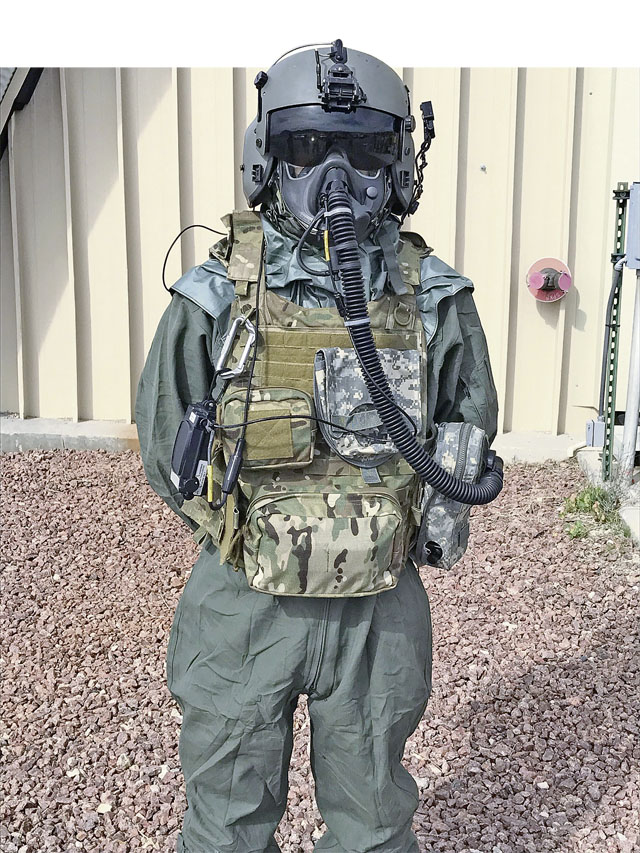
In November, the Air Force completed fielding of an improved chemical, biological, radiological and nuclear protective mask for aircrew on rotary wing aircraft, allowing operational units to achieve full operational capability.
This next-generation mask, also known as the Joint Service Aircrew Mask — Rotary Wing, replaces the Aircrew Eye and Respiratory Protection system on HH-60G Pave Hawk and UH-1N Huey aircraft.
The new mask provides aircrew vastly improved ocular, percutaneous and respiratory protection and integrates with night vision goggles, requires no aircraft modification, and has joint service commonality, a five-fold increase in fit factor, a six-fold increase in battery life, and a removable faceplate.
In addition, the mask gives aircrew an enhanced field of view so they can better conduct combat missions in a CBRN environment.
“With recent and continuing world events, our nation’s ability to effectively fight and win in an environment that involves weapons of mass destruction has become more and more important,” said Dr. Mohamed Mughal, Air Force Life Cycle Management Center’s CBRN Defense Systems Branch chief engineer. “So far, the Air Force has already delivered JSAM RW masks to almost a dozen airbases around the world.”
Fielding teams from the joint program executive office for CBRN defense and Air Combat Command have trained aircrew flight equipment personnel on sizing, fitting and preventative maintenance checks and services for the JSAM RW mask. They have also trained aircrew in the proper wear and use of the mask. To date, the fielding teams have trained approximately 100 AFE personnel and about 75 aircrew.
“Fielding the new masks is significant because they are replacing equipment that limits the capability of aircrew to perform their mission,” said Lt. Col. William Holl, AFLCMC’s CBRN defense systems materiel leader at Aberdeen Proving Ground, Maryland. “The feedback I’m getting from aircrew is that they love the system and are excited about getting this new capability.”
“This next-generation mask is a good-news story all the way around,” added Mughal. “Most importantly, it provides our warfighter added protections and combat capabilities. But it also highlights the Air Force Life Cycle Management Center’s mission to partner with organizations outside the Air Force. This joint service program required us to team with our counterparts in the Army, the Navy and the Marines to derive and balance system requirements that met all services’ mission profiles. Despite the challenges, we succeeded. System acquisition truly is a team sport.”


